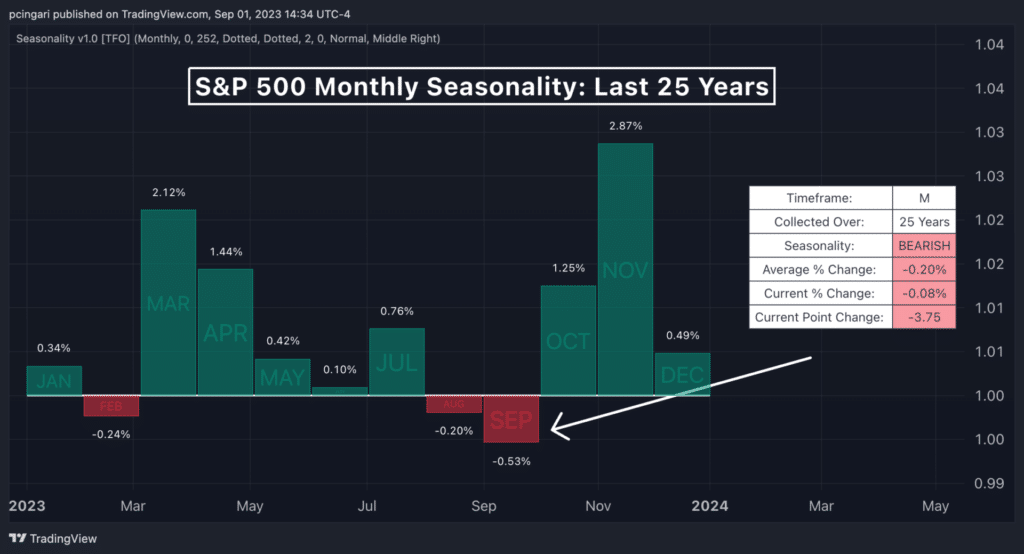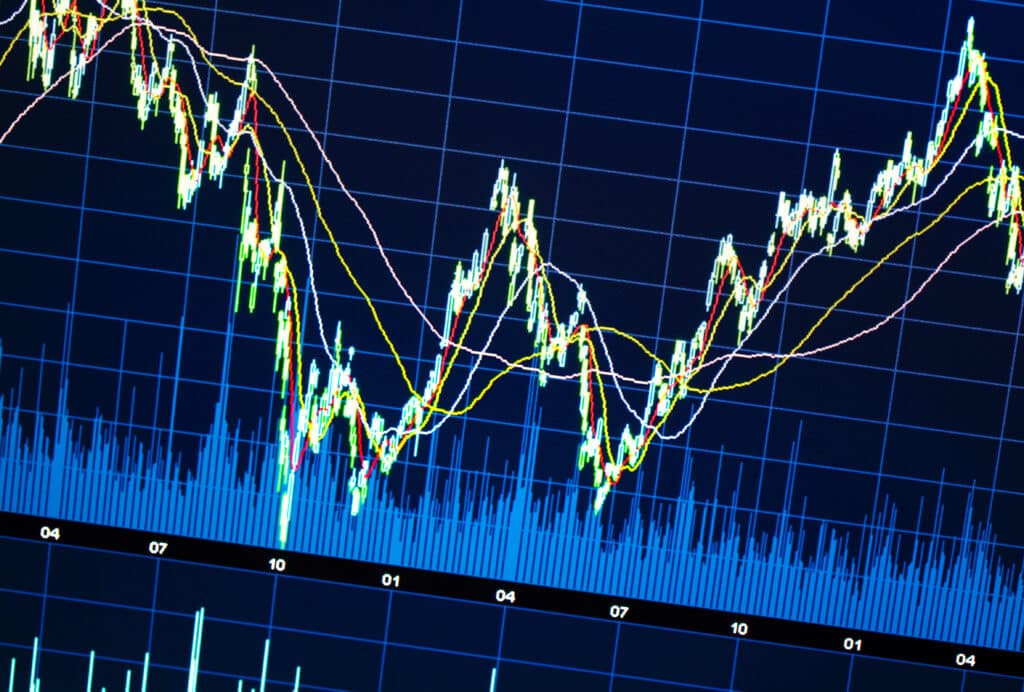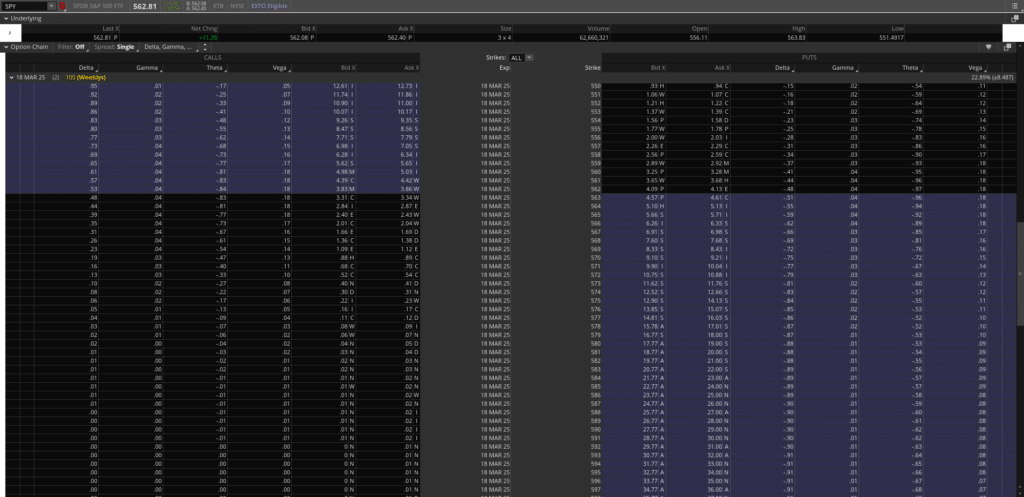Stock Market Seasonality Explained
Stock Market Seasonality Explained
How to Use It to Your Advantage

Like the leaves turning orange in the fall and the warm cover of snow blanketing the countryside, the stock market has its own seasons. These patterns may not be as obvious as the changing weather, but they exist and influence market behavior.
In this guide, we’ll explore stock market seasonality, how to read seasonal charts, and most importantly, how traders can use these patterns to make money.
What Is Stock Market Seasonality?
Stock market seasonality refers to the recurring trends in stock performance at different times of the year. These patterns arise due to a combination of:
- Weather-related influences (e.g., higher energy demand in winter)
- Economic cycles (e.g., inflation and employment trends)
- Corporate reporting schedules (e.g., quarterly earnings)
- Market sentiment shifts (e.g., tax-loss harvesting in December)
These tendencies can affect stocks, sectors, and indices, making it crucial for traders to recognize them and adjust their strategies accordingly.
How Stock Market Seasonality Works
Seasonality suggests that the market’s performance follows predictable cycles, occurring daily, weekly, monthly, and even over multiple years. Some key examples include:
- Cyclical sectors like energy – Prices rise in summer due to higher travel demand.
- Manufacturing and industrial cycles – Influence commodity prices over several years.
- Inflation trends – Often linked to employment data and consumer spending.
While seasonality can offer useful insights, it’s not a guaranteed predictor of market movements. External factors such as earnings reports, geopolitical conflicts, and economic shifts can override historical trends.
Key Seasonal Trends in the Stock Market
1. Strong and Weak Market Periods
Historical data has shown that:
✔ October to April tends to be a strong period for stocks.
✔ April is the single strongest month for equities.
✔ August and September are historically the weakest months.
✔ Between May and August, markets generally become quieter.
While these trends exist, they are not set in stone and should be used alongside fundamental and technical analysis.
2. Seasonal Sector Strength
Certain sectors tend to perform better at specific times of the year:
? Tech stocks: Strong from September to January (coinciding with the holiday season and tech product launches).
? Energy stocks: Gain momentum in summer when fuel consumption rises.
? Consumer discretionary stocks: Surge in November and December during the holiday shopping season.
3. Monthly Seasonality Patterns
Each month exhibits distinct seasonal tendencies:
? January Effect: Small-cap stocks often outperform due to reinvestment after tax-loss harvesting.
? Sell in May and Go Away: A historical trend where markets slow down during summer months.
? Santa Claus Rally: Markets tend to rise at the end of December, driven by holiday optimism and bonus reinvestments.
? September Weakness & October Crashes: The third quarter has historically been weak due to institutional rebalancing and tax-loss harvesting.
How to Read Seasonality Charts
A seasonality chart shows a stock or index’s average performance per month over multiple years. Here’s how to interpret them:
1️⃣ Identify historical patterns – Look for months with consistently strong or weak performance.
2️⃣ Compare across years – The more data, the better. Use at least 10 years of data for reliability.
3️⃣ Use alongside other indicators – Combine seasonality insights with fundamental and technical analysis.
Example Calculation
To determine stock market seasonality for January, analysts average the past 10 years of January’s performance.
For instance, if:
- The market rose 5% in the first two weeks
- Then dropped 3% due to external events
? The net result for January would be +2% in the seasonality chart.
Trading Strategies Using Stock Market Seasonality
Swing Trading with Seasonal Trends
? For long-term traders: Use seasonal charts to time entries and exits for multi-month holds.
? For active traders: Use seasonality as an additional confirmation rather than a sole decision-making tool.
Example:
- If September is historically bearish, a swing trader might wait for October strength to enter long positions.
- A day trader might short sell weak sectors in historically bearish months.
Common Myths About Market Seasonality
? Myth: Market seasonality guarantees profits
✔ Reality: Past performance does not guarantee future results.
? Myth: Every October leads to a crash
✔ Reality: While October has seen historic crashes (e.g., 1987’s Black Monday), it is not a guaranteed bearish month.
? Myth: You should always “Sell in May”
✔ Reality: May to October can still present trading opportunities, especially in strong individual stocks.
Frequently Asked Questions (FAQs)
What Is Seasonality in the Stock Market?
Seasonality refers to recurring patterns in market performance based on time-based factors such as months, quarters, or economic cycles.
What Are the Best and Worst Months for Stocks?
- Best months: October–April, with April being historically the strongest.
- Worst months: August and September tend to be the weakest.
Can Seasonality Predict Market Crashes?
Not exactly. While history shows patterns, crashes are influenced by macroeconomic and geopolitical events, not just seasonality.
Final Thoughts on Stock Market Seasonality
? Key Takeaways:
✅ Seasonality can be a valuable tool but should be used alongside fundamental and technical analysis.
✅ Patterns like the January Effect, Santa Claus Rally, and Sell in May exist, but they aren’t absolute rules.
✅ Using 10+ years of historical data helps improve reliability.
✅ External factors like earnings, interest rates, and economic conditions can override seasonal trends.
? Smart traders use seasonality as part of a bigger strategy—not the entire strategy. Be prepared, be adaptable, and always combine seasonality insights with solid risk management.
Check out articles on:
- Introducing to Options Trading
- Mastering Butterfly Spreads
- The Power of Diagonal Spreads
- The Power of Iron Condors
- The Power of Vertical Credit Spreads
- How to Succeed Trading Stocks, and Stock Options in a Volatile Market
Elevate Your Options Trading Skills
Ready to master options? Join our community for in-depth education on options trading, live sessions, and expert analysis of options trading strategies. Sign up today to start profiting from market swings using advanced options trading strategies!
Below are the links:
- Day Trading Room
- Swing Trading Room(Short-term)
- Small Account Mentorship
- SPX Trading Alerts(Alerts Only)
- Revolution Swings(Alerts Only)
To your success,

Billy Ribeiro is a globally recognized trader renowned for his mastery of price action analysis and innovative trading strategies. He was personally mentored by Mark McGoldrick, famously known as “Goldfinger,” Goldman Sach’s most successful investor in history. McGoldrick described Billy Ribeiro as “The Future of Trading,” a testament to his extraordinary talent. Billy Ribeiro solidified his reputation by accurately calling the Covid crash bottom, the 2022 market top, and the reversal that followed, all with remarkable precision. His groundbreaking system, “The Move Prior to The Move,” enables him to anticipate market trends with unmatched accuracy, establishing him as a true pioneer in the trading world.
Connect with us:






